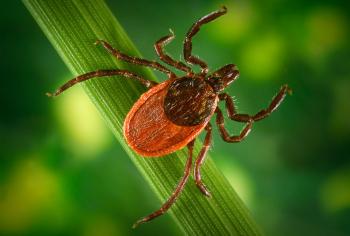Ticks! The Season is upon us again!
April 30, 2019

Spring is finally here, and so are the ticks! Keep your self healthy with these prevention tips:
Know where to expect ticks. Ticks live in grassy, brushy, or wooded areas, or even on animals. Spending time outside walking your dog, camping, gardening, or hunting could bring you in close contact with ticks. Many people get ticks in their own yard or neighborhood.
Treat clothing and gear with products containing 0.5% permethrin. Permethrin can be used to treat boots, clothing and camping gear and remain protective through several washings. Alternatively, you can buy permethrin-treated clothing and gear.
Use Environmental Protection Agency (EPA)-registered insect repellentsExternal containing DEET, picaridin, IR3535, Oil of Lemon Eucalyptus (OLE), para-menthane-diol (PMD), or 2-undecanone. EPA’s helpful search toolExternal can help you find the product that best suits your needs. Always follow product instructions.
Do not use insect repellent on babies younger than 2 months old.
Do not use products containing OLE or PMD on children under 3 years old.
Avoid Contact with Ticks
Avoid wooded and brushy areas with high grass and leaf litter.
Walk in the center of trails
.
Check your clothing for ticks. Ticks may be carried into the house on clothing. Any ticks that are found should be removed. Tumble dry clothes in a dryer on high heat for 10 minutes to kill ticks on dry clothing after you come indoors. If the clothes are damp, additional time may be needed. If the clothes require washing first, hot water is recommended. Cold and medium temperature water will not kill ticks.
Examine gear and pets. Ticks can ride into the home on clothing and pets, then attach to a person later, so carefully examine pets, coats, and daypacks.
Shower soon after being outdoors. Showering within two hours of coming indoors has been shown to reduce your risk of getting Lyme disease and may be effective in reducing the risk of other tickborne diseases. Showering may help wash off unattached ticks and it is a good opportunity to do a tick check.
Check your body for ticks after being outdoors. Conduct a full body check upon return from potentially tick-infested areas, including your own backyard. Use a hand-held or full-length mirror to view all parts of your body. Check these parts of your body and your child’s body for ticks:
- Under the arms
- In and around the ears
- Inside belly button
- Back of the knees
- In and around the hair
- Between the legs
- Around the waist
Dogs are very susceptible to tick bites and tickborne diseases. Vaccines are not available for most of the tickborne diseases that dogs can get, and they don’t keep the dogs from bringing ticks into your home. For these reasons, it’s important to use a tick preventive product on your dog.
Tick bites on dogs may be hard to detect. Signs of tickborne disease may not appear for 7-21 days or longer after a tick bite, so watch your dog closely for changes in behavior or appetite if you suspect that your pet has been bitten by a tick.
Talk to your veterinarian about:
The best tick prevention products for your dog
Tickborne diseases in your area
To further reduce the chances that a tick bite will make your dog sick:
Check your pets for ticks daily, especially after they spend time outdoors.
If you find a tick on your pet, remove it right away.
Reduce tick habitat in your yard.
Note: Cats are extremely sensitive to a variety of chemicals. Do not apply any tick prevention products to your cats without first asking your veterinarian!
Remove tick habitats from your yard:
Remove leaf litter.
Clear tall grasses and brush around homes and at the edge of lawns.
Place a 3-ft wide barrier of wood chips or gravel between lawns and wooded areas to restrict tick migration into recreational areas.
Mow the lawn frequently.
Stack wood neatly and in a dry area (discourages rodents).
Keep playground equipment, decks, and patios away from yard edges and trees.
Discourage unwelcome animals (such as deer, raccoons, and stray dogs) from entering your yard by constructing fences.
Remove old furniture, mattresses, or trash from the yard that may give ticks a place to hide.
References: